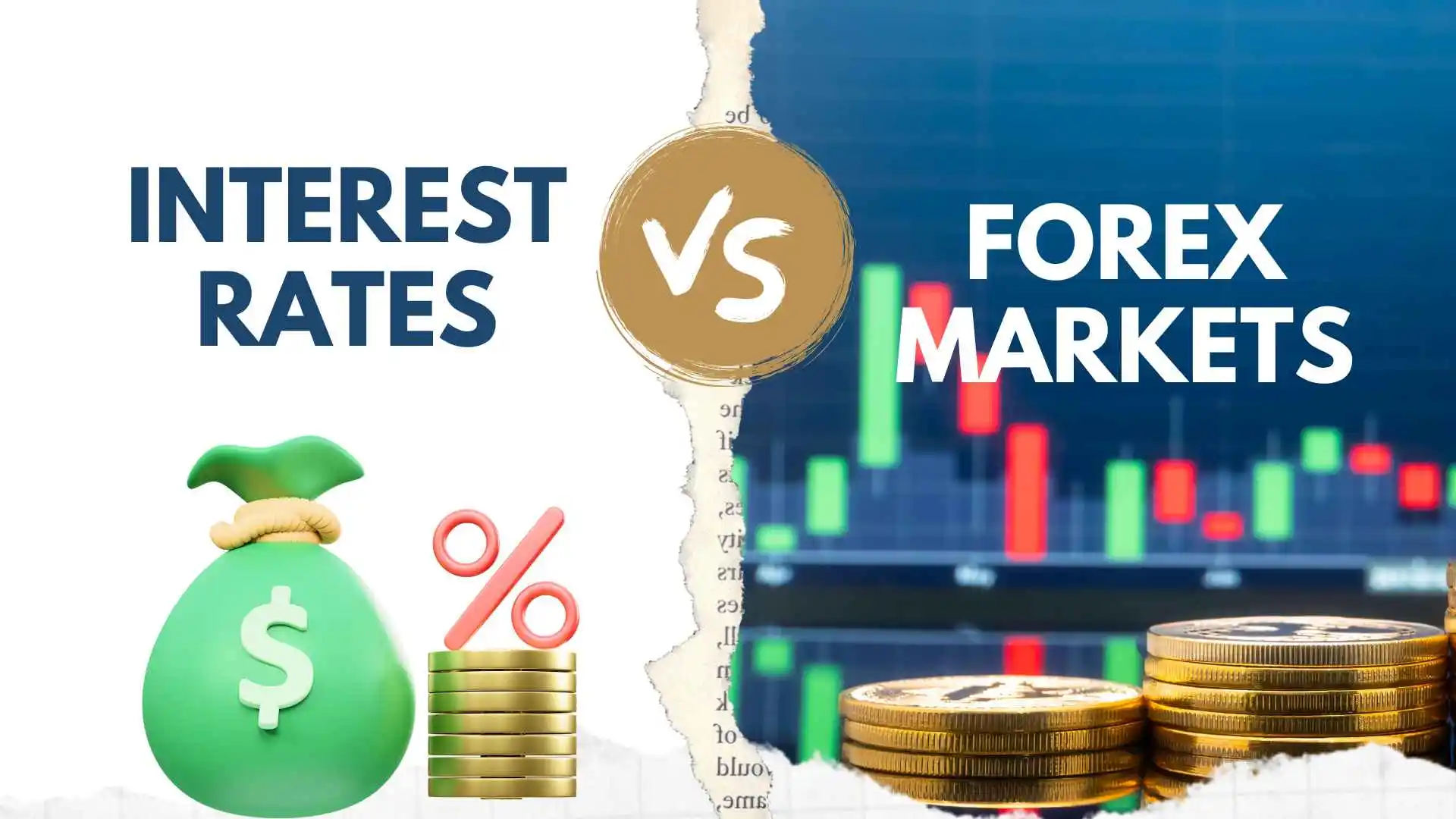
National interest rates play a crucial role in shaping a country’s economy. Governments and central banks use monetary policies to adjust these rates to achieve specific goals, such as boosting employment or controlling inflation. These adjustments influence the money supply, credit availability, and borrowing costs, ultimately impacting currency values and exchange rates, which directly affects the forex market.
In this blog, we’ll explore how interest rate changes affect currency strength and exchange rates, the factors influencing these changes, and their broader economic implications. Let’s dive in! 🚀
How Do Interest Rates Affect Currency Value? 📈
When a country raises its interest rates, its currency typically becomes more valuable. Higher interest rates attract foreign investors seeking better returns, increasing demand for the local currency. On the flip side, lower interest rates make the currency less appealing to investors, weakening its value.
However, this straightforward relationship can be influenced by other factors, particularly the interplay between interest rates and inflation. For example:
- Central banks often increase interest rates to curb inflation.
- Rapid inflation can erode a currency’s value faster than interest rate hikes can benefit savers.
Key Factors Driving Interest Rate Decisions 🧐
Monetary policy decisions are influenced by several economic and political factors:
1. Politics Political stability and government policies greatly influence currency valuations. For instance:
- Rising government and consumer debt in the U.S. led to near-zero interest rates to stimulate the economy.
- When the economy recovers, interest rates are often raised to prevent inflation from spiraling out of control.
2. Economic Indicators Metrics like gross domestic product (GDP) reflect a nation’s economic health and guide interest rate decisions. For example:
- The U.S. experienced 10 consecutive quarters of GDP growth, with a 3.1% increase in Q3 2024.
3. Global Trade 🌎 A country’s balance of trade—its imports versus exports—affects its currency. Strong exports increase demand for a nation’s products and, by extension, its currency.
4. Financial Stability The U.S. dollar is seen as a safe-haven currency, maintaining its value even during economic uncertainty. However, high national debt can lead to inflation and currency devaluation over time.
Interest Rates Post-Pandemic: A Case Study
In March 2020, the Federal Reserve slashed the federal funds rate to 0%-0.25% to counter the economic slowdown caused by COVID-19. These historically low rates were designed to make credit more accessible and stimulate economic activity. Here’s what happened next:
- By 2022, inflation surged, prompting the Federal Reserve to raise rates.
- Rates peaked at 5.25%-5.50% by July 2023 before tapering off in 2024 as inflation subsided.
- The U.S. Dollar Index hit a 20-year high in October 2022, reflecting a strong dollar.
The Ripple Effect of Rising U.S. Interest Rates 📊
When U.S. interest rates increase, fixed-income investments like bonds offer higher returns. This attracts investors worldwide, boosting demand for the U.S. dollar. As demand rises, the dollar strengthens against other currencies, leading to favorable exchange rates.
How Inflation Impacts Currency Value 💡
Inflation decreases a currency’s purchasing power, making it less attractive to investors. High inflation signals economic instability, discouraging foreign investments. However, prioritizing inflation control over other economic goals can strengthen a currency by restoring investor confidence.
What Influences Exchange Rates?
Several factors shape exchange rates, including:
- Interest Rates: Higher rates usually strengthen a currency.
- Economic Health: Stable economies with growing GDPs attract investment.
- Political Stability: Governments with sound policies inspire investor trust.
- Trade Balances: Nations with strong export-driven economies often enjoy favorable exchange rates.
Why Some Currencies Are More Attractive 💵✨
Investors favor currencies tied to:
- High-yield fixed-income securities.
- Strong economies with manageable debt levels.
- Nations experiencing economic growth and favorable trade balances.
Conclusion: The Bigger Picture 🌐
Interest rate changes significantly impact a country’s currency value and exchange rates. By raising or lowering rates, governments aim to influence their economies positively, but these actions also have far-reaching global effects. For forex traders and investors, understanding these dynamics can offer valuable insights into currency trends.
If you’re looking for a solution to simplify trading strategies and automate responses to market shifts, consider exploring AlgoDeltaFX. With its advanced tools, multi-account management, and signal-based automation, it’s a game-changer for traders navigating complex markets.
Stay tuned for more updates and insights on global trading trends with the AlgoDeltaFX Blog! 🌟
Disclaimer: The information provided in this blog is for informational purposes only and should not be considered as financial or investment advice. Please do your own research or consult with a professional before making any trading decisions.
source : investopedia

